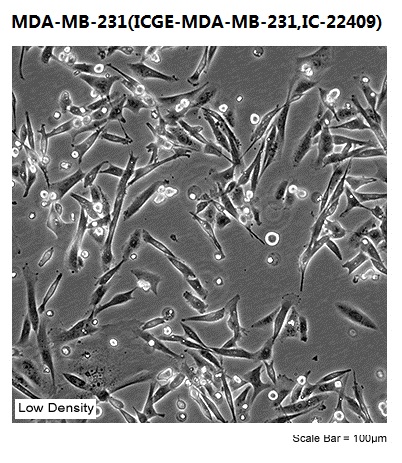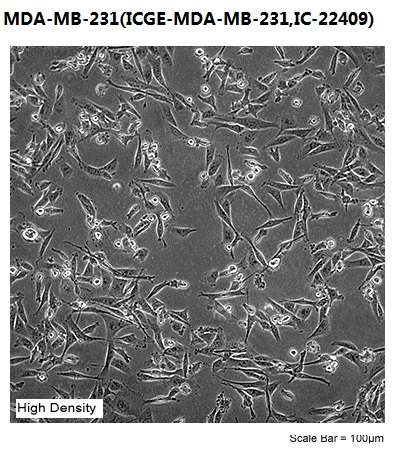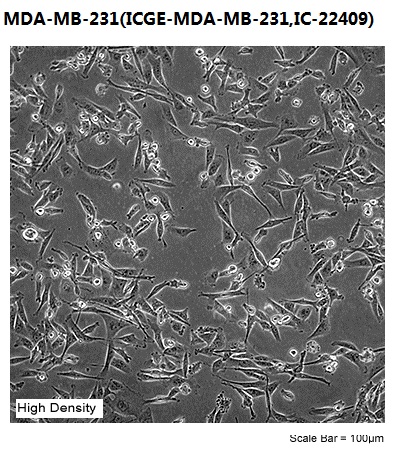


Overview
| Permits and Restrictions | |
|---|---|
| Organism | Homo sapiens, human |
| Tissue | mammary gland/breast; derived from metastatic site: pleural effusion |
| Cell Type | epithelial |
| Product Format | frozen |
| Morphology | epithelial |
| Culture Properties | adherent |
| Biosafety Level |
1
Biosafety classification is based on U.S. Public Health Service Guidelines, it is the responsibility of the customer to ensure that their facilities comply with biosafety regulations for their own country. |
| Disease | adenocarcinoma |
| Age | 51 years adult |
| Gender | female |
| Ethnicity | Caucasian |
| Applications |
These cells are a suitable transfection host
|
| Storage Conditions | liquid nitrogen vapor phase |
Properties
| Karyotype | The cell line is aneuploid female (modal number = 64, range = 52 to 68), with chromosome counts in the near-triploid range. Normal chromosomes N8 and N15 were absent. Eleven stable rearranged marker chromosomes are noted as well as unassignable chromosomes in addition to the majority of autosomes that are trisomic. Many of the marker chromosomes are identical to those shown in the karyotype reported by K.L. Satya-Prakash, et al. |
|---|---|
|
|
|
| Receptor Expression |
epidermal growth factor (EGF), expressed
transforming growth factor alpha (TGF alpha), expressed
|
| Oncogene | The cells express the WNT7B oncogene. Ref |
| Tumorigenic | Yes |
| Effects |
Yes, in ALS treated BALB/c mice, forms poorly differentiated adenocarcinoma (grade III)
Yes, in nude mice, forms poorly differentiated adenocarcinoma (grade III)
|
Background
| Complete Growth Medium |
The base medium for this cell line is ATCC-formulated Leibovitz''''''''s L-15 Medium, Catalog No. 30-2008. To make the complete growth medium, add the following components to the base medium: fetal bovine serum to a final concentration of 10%.
(Note: The L-15 medium formulation was devised for use in a free gas exchange with atmospheric air. A CO2 and air mixture is detrimental to cells when using this medium for cultivation) |
|---|---|
| Subculturing |
Volumes are given for a 75 cm2 flask. Increase or decrease the amount of dissociation medium needed proportionally for culture vessels of other sizes. Corning® T-75 flasks (catalog #430641) are recommended for subculturing this product.
Subcultivation Ratio: A subcultivation ratio of 1:2 to 1:4 is recommended
Medium Renewal: 2 to 3 times per week
|
| Cryopreservation |
Freeze medium: Complete growth medium supplemented with 5% (v/v) DMSO
Storage temperature: liquid nitrogen vapor phase
|
| Culture Conditions |
Atmosphere: air, 100%
Temperature: 37��C
|


